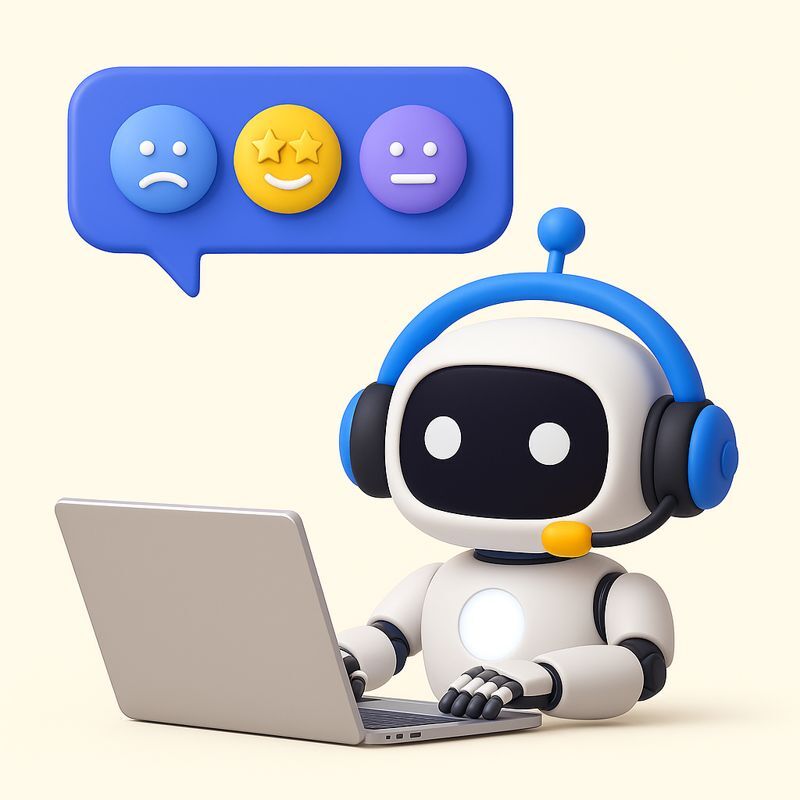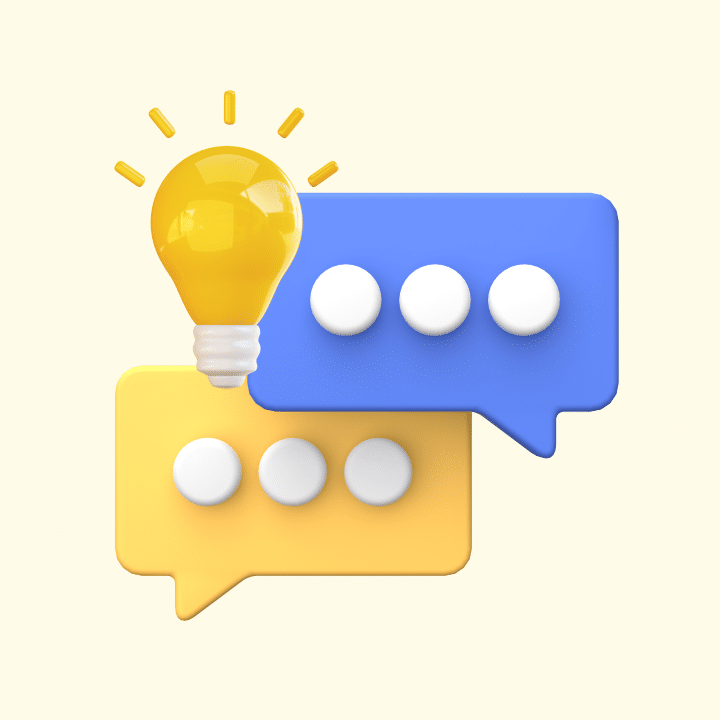The other day, I was browsing some toys for my mom’s pet Beagle when I landed on a popular e-commerce pet supply store. A chat window popped in the corner of my screen as I looked around. “Woof, Hooman, I’m Fetch! Anything I can help you fetch?” it said. I couldn’t help but smile. The name and messaging were so charming and on-brand that I was instantly sold!
Today, every business, big or small, uses chatbots. Whether it’s for helping customers book flights at 2 AM or recommending the perfect running shoes, chatbots have become integral to assisting customers in real-time.
But, let’s face it: the fact that bots are not human can be a bit off-putting for many customers—even more so if your chatbot has a generic and robotic name like “Customer Support Assistant.”
So, what’s the first step to giving your bot a personality while making it inviting and engaging? Picking the perfect name.
Whether offbeat, formal or just straight-up funny, a good name goes a long way in enhancing the customer experience and reflecting your brand’s personality.
In this article, we’ll talk about the art of naming chatbots. We’ll explore why bot names are more than a fun exercise in creativity; they’re a strategic decision that impacts how customers think about and engage with your brand. From advice on picking the perfect chatbot name to examples of bots that are crushing it, we have you covered.
Let’s get started.
Recommended Read: 11 Features To Look For in a Chatbot in 2025
Table of Contents
- Why does your bot’s name matter?
- How to pick the right bot name
- 42 creative bot name ideas
- Bonus: Common mistakes to avoid while naming your bot
- Naming your bot: Keep it simple, make it memorable
[cta_block]
Why does your bot’s name matter?
Before we discuss how to name your chatbot, let’s consider why this matters.
1. Sets the tone for the interaction
For first-time website visitors, a chatbot named appropriately sets the tone for the kind of experience they’ll have. For example, a name like “Chatty Chibber” signals customers that they’re in for a lighthearted interaction, whereas a name like “DataBot” gives off a more professional first impression.
2. It’s an extension of your brand’s voice and personality
How and what you name your chatbot can tell customers exactly what your brand is about. If you’re in the e-commerce business and your company’s brand voice is fun, a quirky name ties everything together. On the contrary, something sleek and serious might be better if you’re into the business of finance or manufacturing.
Sephora’s chatbot, “Sephora Virtual Artist,” is an excellent example of an absolutely on-brand chatbot. It provides customers with makeup tutorials, product recommendations, and virtual try-on options. The name aptly reflects the company’s focus on artistry and beauty.
3. It humanizes the bot
I don’t know about you, but human touch is essential to me in customer service interactions. I prefer engaging with someone (or something) that feels human-like and relatable rather than cold and mechanical. That’s what a well-thought-out name for your chatbot can do–give it a personality. It helps make interactions more enjoyable and builds a sense of connection.
Recommended Read: AI vs Human in Customer Service
Take Rufus, for example–Amazon’s AI-powered shopping assistant built to assist customers as they shop on Amazon. The name is human and relatable. It also pays homage to one of the first dogs that frequented Amazon’s offices, which highlights Amazon’s pet-friendly culture.
4. It enhances the user experience
Let’s suppose you’re visiting a website for assistance with some software. You go in expecting a tediously long resolution process, but a chatbot named “Fix-It Fiona” instantly greets you. The chatbot name tells you three things:
- It’s there to help you fix your problems (a clear purpose).
- It has a friendly, approachable tone (comfortable to interact with).
- It’s not a bland, generic bot (memorable and engaging).
Now compare this to a chatbot named “Automated Tech Support.” Which one are you more likely to interact with?
The right chatbot name creates a welcoming environment, aligns with user expectations, and improves customer engagement, making interactions memorable and enjoyable.
How to pick the right bot name
Choosing the right name for your bot can turn a simple digital assistant into an experience your customers will actually look forward to.
Here are some key factors you need to consider during the naming process:
1. What purpose is your bot going to serve?
You’ll first need to figure out your chatbot’s role. Is it for supporting customers or assisting sales? Is it for generating leads or purely for entertainment? Knowing the chatbot’s purpose is the key to its identity.
Starbucks’ My Starbucks Barista chatbot is an excellent example of a chatbot designed to automate customers’ order and payment processes. The name instantly conveys the bot’s role as your personal digital barista. It’s simple, straightforward, and perfectly aligned with the Starbucks experience.
2. Who is your audience?
Once you’ve defined the purpose of your chatbot, you need to be clear on the audience you’re looking to serve through it. The name should resonate with your customers’ demographics, tone preferences, cultural context, and expectations.
For example, if your customers are mostly GenZs, they might appreciate fun names like “Bot-tato” or “Bot-man”. On the other hand, if you’re serving more professional and mature audiences, they may prefer polished options like “Sophia.”
Another factor to consider when naming your chatbot is cultural and religious sensitivity. Ensure that the name you choose does not hurt the religious sentiments of any community. This is especially important if you’re serving a global audience.
In 2018, ConvertKit announced a rebrand to the name “Seva”–a Sanskrit word meaning selfless service. While the name carries a noble sentiment, its use as a commercial email marketing tool was seen as inappropriate by many in South Asia, especially within Sikh communities. Additionally, the name failed to convey the product’s purpose. Owing to the backlash, ConvertKit wisely reverted to its original name.
While this example is technically not of a chatbot, it shows how a name has the power to make or break a brand.
3. What is your brand’s voice and personality?
Your chatbot’s name should be an extension of your brand’s identity and voice. Is your brand fun and quirky or serious and professional? Your bot name should align with your communication style, brand ethos and industry.
For example, if you’re a brand selling kids’ apparel and toys, you might want to name your chatbot something cute like “Giggles”. A more elegant bot name like “Vera” might work well if you sell luxury leather bags.
One chatbot name that I think stands true to its brand personality is Domino’s “Dom”. It’s friendly, casual, and approachable–just like the brand. Plus, its simplicity and use of the brand’s abbreviated name give it higher recall value, making it memorable and on-brand.
4. Is your bot name meaningful yet memorable?
By now, you probably have a list of potential bot names—but how meaningful and memorable are they?
A great starting point is to consider your brand identity, industry language, or functional descriptions that highlight your bot’s purpose. The right name should resonate with your audience, reflect your brand’s personality, and make a lasting impression.
For example, Bank of America chose the name “Erica” for its virtual assistant as a natural extension of its brand identity. Inspired by the word “America,” the name reflects the bank’s focus on trust, professionalism, and accessibility. The name is simple, relatable, and easy to remember, and most importantly, it reinforces its brand values.

You can also turn to pop culture, myths, historical legends, and real-world symbols like mascots or landmarks to add personality and meaning to your bot name. Creative sources like the dictionary, nature, or wordplay can spark memorable and unique names. Don’t forget to include input from team members and customers, as they might suggest some excellent names that’ll resonate with your target audience.
This part is important: choose a name that is easy to pronounce and remember. Nobody wants to interact with a bot named “Xae’Rkl Bot,” no matter how path-breaking you might think the name is.
Looking to create a chatbot? You’ve got to check out Hiver! Hiver makes it simple to handle repetitive queries, offer 24/7 support, and set up custom workflows to keep things running smoothly. It routes chats to the right agents, delivers quick, accurate responses, and helps teams collaborate effortlessly. With Hiver, you can boost response times, delight customers, and scale your support operations without breaking a sweat. Try Hiver for free today!
42 creative bot name ideas
Here comes the fun part. We’ve brainstormed some catchy chatbot name ideas (for various use cases) for you. Feel free to steal one (promise, we won’t tell):
Customer support bots:
- Helpie
- FixBuddy
- Assistly
- AskLee
- Guidey
- ResQ
Recommended Read: How to Create a Chatbot for Customer Service
Sales Bots:
- Shopella
- Sell-E
- Bargain Buddy
- DealMate
- Buyzie
- PromoGenie
Tech or AI Bots:
- AIra
- Codey
- AIvy
- Zypher
- Nexis
- SparkAI
Recommended Read: Top 12 AI Chatbots in 2025 [Key Features + Use Cases]
Fun and Entertainment Bots:
- TriviaTed
- Snarky Sarah
- Giggles
- BanterBot
- Witty Wanda
- Quizzie
Financial and Business Bots:
- WealthWise
- Maxwell
- Sophia
- Atlas
- Orion
- Savvy
Healthcare Bots:
- MediBuddy
- BookMyCare
- AskDoc
- HealthDesk
- MediHelp
- DocIQ
Real Estate Bots:
- Havenly
- MoveMate
- Rently
- PropWise
- FindMyPad
- NestScout
Bonus: Common mistakes to avoid while naming your bot
Naming your chatbot is exciting, but it’s easy to get carried away and ignore the potential pitfalls. A poorly chosen name can confuse users, clash with your brand, or even spark unintended controversy. Here are some common mistakes to avoid:
- Overcomplicating it: Long, complex, difficult-to-pronounce, or overly clever names can really confuse your customers.
- Ignoring cultural sensitivities: We spoke about this earlier – be aware of how the name translates or might be perceived in other languages and cultures. A name that sounds meaningful or deep to you might confuse or even offend individuals from cultures different to yours.
- Being too trendy: A pop-culture reference or meme might feel relevant now, but it can quickly become dated. Choose a timeless name to avoid the need for frequent rebranding.
- Forgetting the purpose: The name should align with the bot’s function and brand voice. Think of a financial advisor bot named “Bubbly” or a tech troubleshooting bot named “Sunny”. It’s off-brand and sounds borderline ridiculous!
- Overloading on personality: It’s good to give your bot a character and personality but don’t let the name overshadow what it really does. It’s still a tool, and the first priority should be clarity about its intended purpose.
- Ignoring brand alignment: Your bot’s name should reflect your company’s tone and values. A quirky name might clash with a professional, corporate brand, just as a formal name might feel out of place for a playful or casual brand.
- Choosing generic names: Something like a “ChatBot” or “Support Assistant” is too mundane and unmemorable. Come up with a thoughtful and creative chatbot name.
- Skipping user testing: Names that seem clever to your company folks might seem stupid or irrelevant to your audience. Run the name by real users to see if it resonates.
Avoiding these common pitfalls will help you select a chatbot name that’s memorable, culturally appropriate, and aligned with your brand’s goals and values.
Naming your bot: Keep it simple, make it memorable
Your bot’s name is so much more than just a name—it’s an opportunity to build an emotional connection and bring your brand’s personality to life.
Whether it’s something sleek and professional or cheeky and charming, ensure it aligns with your brand name and your bot’s purpose.
Don’t feel pressured to come up with “the perfect name”. Sometimes, even a simple human name works brilliantly–case in point, “Dom” and “Alexa”. You’d have probably even heard of these names at a family barbecue, but they make for such memorable chatbot names. So, don’t overthink it, but don’t phone it in either.
Make it count, make it memorable, and maybe even have a little fun with it.
 Skip to content
Skip to content












